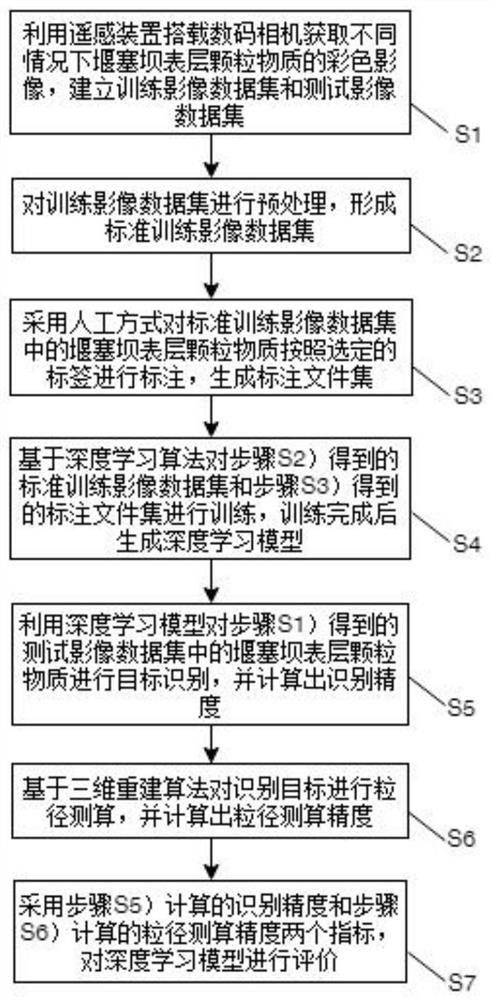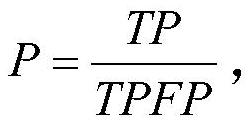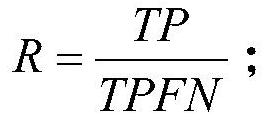Barrier dam surface layer particulate matter detection method based on deep learning
A particulate matter, deep learning technology, applied in image data processing, instrument, character and pattern recognition, etc., can solve the problems of low degree of automation, poor timeliness, uneven particle size of stones, etc., to reduce workload and recognize speed. Fast and accurate results
- Summary
- Abstract
- Description
- Claims
- Application Information
AI Technical Summary
Problems solved by technology
Method used
Image
Examples
Embodiment Construction
[0035] The following will clearly and completely describe the technical solutions in the embodiments of the present invention with reference to the accompanying drawings in the embodiments of the present invention. Obviously, the described embodiments are only some, not all, embodiments of the present invention. Based on the embodiments of the present invention, all other embodiments obtained by persons of ordinary skill in the art without making creative efforts belong to the protection scope of the present invention.
[0036] The purpose of the present invention is to provide a method for detecting particulate matter on the surface of barrier dams based on deep learning, which is used to realize the automatic detection of particulate matter on the surface of barrier dams, and has the advantages of simple process, reliable calculation, fast recognition speed, high accuracy, and Strong features.
[0037] In order to make the above objects, features and advantages of the presen...
PUM
 Login to View More
Login to View More Abstract
Description
Claims
Application Information
 Login to View More
Login to View More - R&D
- Intellectual Property
- Life Sciences
- Materials
- Tech Scout
- Unparalleled Data Quality
- Higher Quality Content
- 60% Fewer Hallucinations
Browse by: Latest US Patents, China's latest patents, Technical Efficacy Thesaurus, Application Domain, Technology Topic, Popular Technical Reports.
© 2025 PatSnap. All rights reserved.Legal|Privacy policy|Modern Slavery Act Transparency Statement|Sitemap|About US| Contact US: help@patsnap.com



